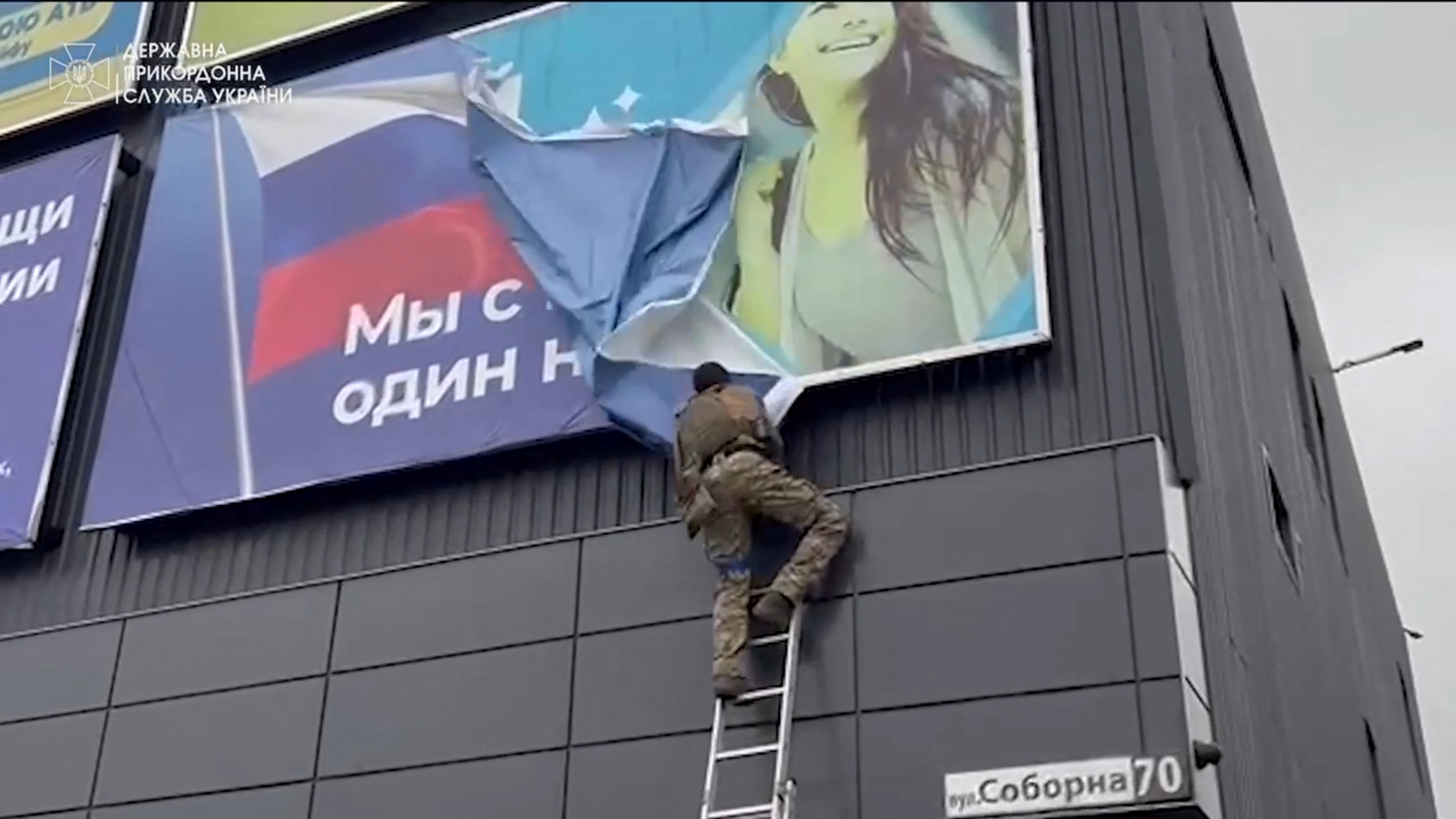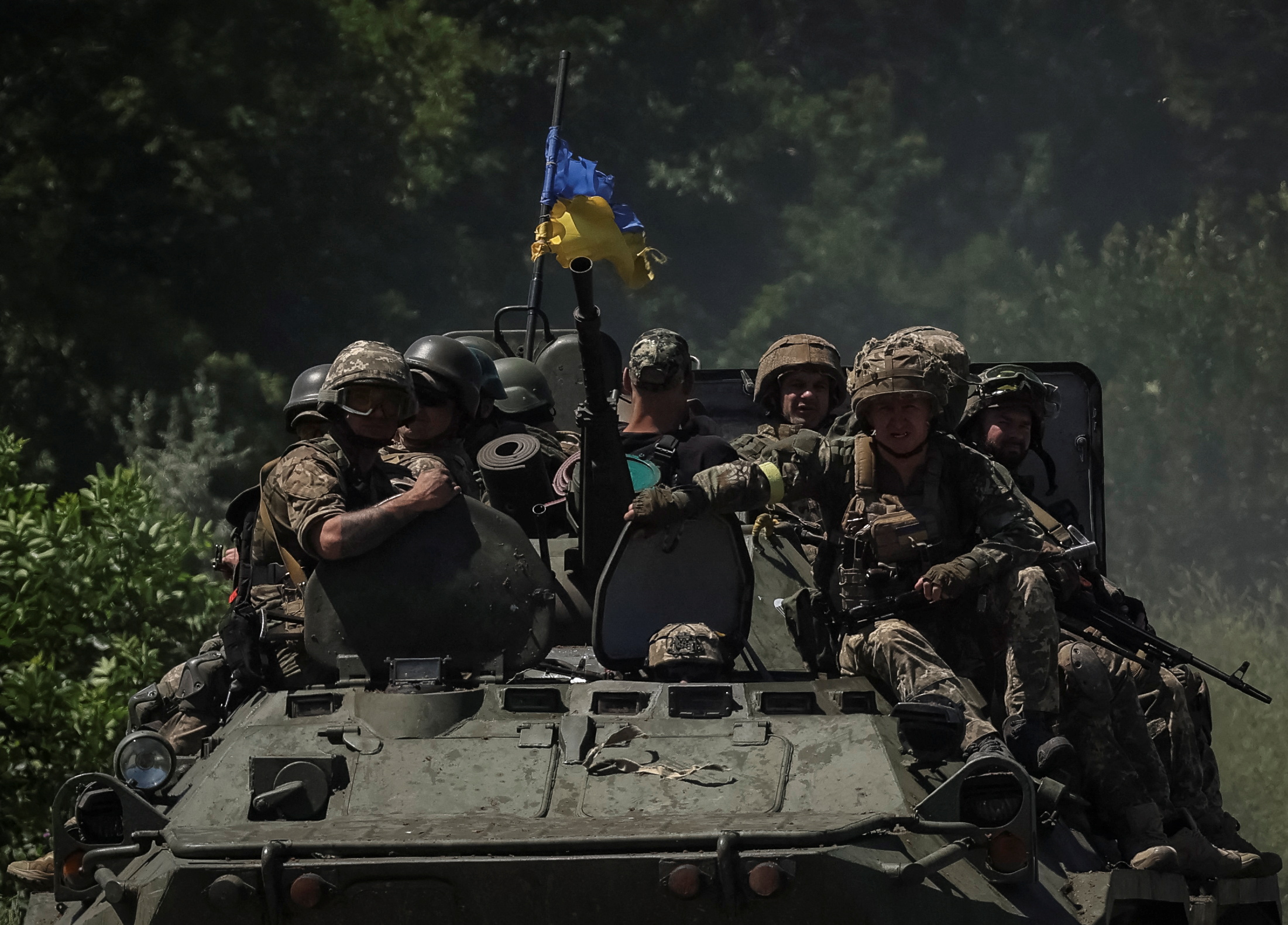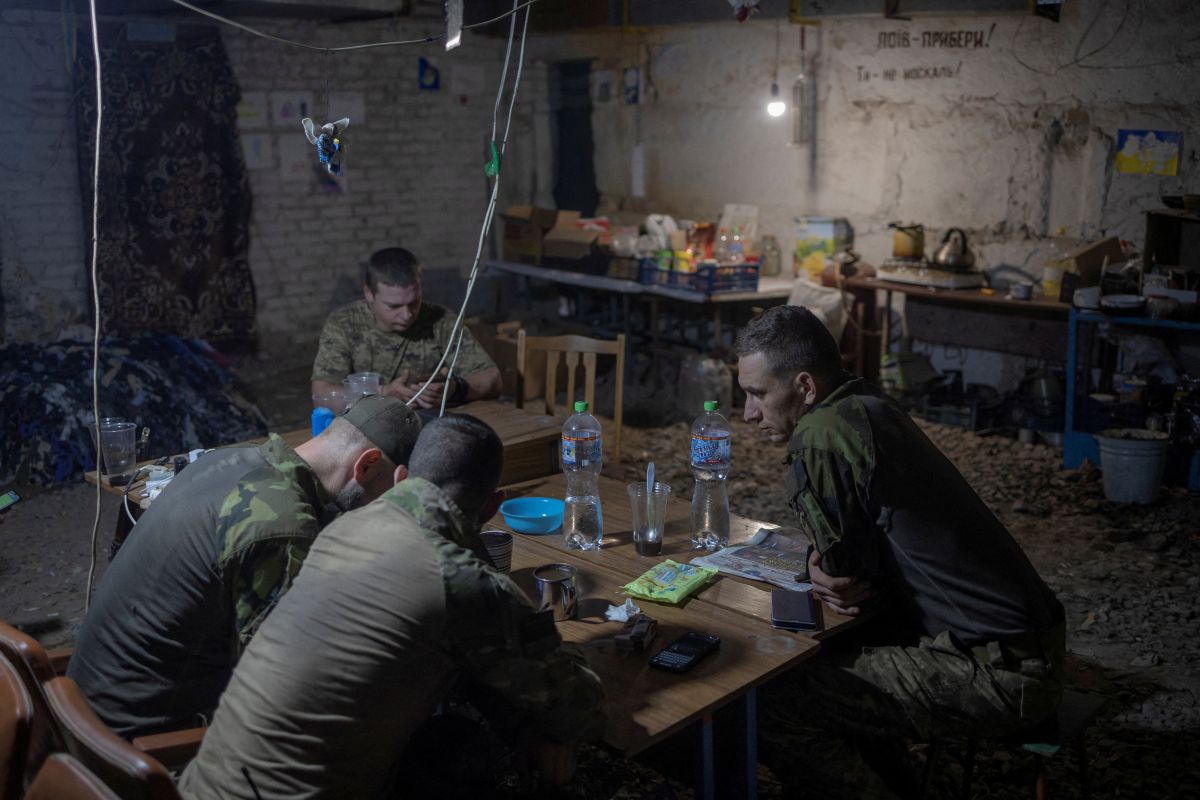The Military Situation in Ukraine as of the Middle of September
On 11 September, thanks to a several-day counter-offensive, the Armed Forces of Ukraine managed to take control of the Kharkiv region. Fighting is also going on in Kherson Oblast. These actions have raised the morale of the Ukrainian army and society and increased international interest in the war in Ukraine. The further success of Ukraine’s actions will depend on its ability to replenish reserves and increasing Western military support.
 STATE BORDER SERVICE OF UKRAINE/ Reuters/ FORUM
STATE BORDER SERVICE OF UKRAINE/ Reuters/ FORUM
What is happening in Kharkiv Oblast?
In early September, the Armed Forces of Ukraine launched a counter-offensive against the Russian forces stationed in Kharkiv Oblast. Almost all of the Russian-controlled parts of Kharkiv Oblast were liberated, with the exception of a narrow belt on the eastern side of the Oskil River where the Russians created a new line of defence. In total, the Armed Forces of Ukraine have restored control over about 50 localities and a total of about 3,000 square kilometres, which has also allowed for regaining control over part of the border with Russia. The Ukrainian offensive was successful in part because of the numerical advantage of the Ukrainian Armed Forces over the Russians. It was also possible because of the activities carried out earlier in the south of Ukraine, which drew Russian combat components there, including – equipment (tanks, heavy transports) from Crimea and soldiers stationed in Donbas. For Russia, the Kherson Oblast, which borders Crimea, remains the key not only to securing the peninsula but also for supplying it with water from Kakhovka Reservoir. Taking control of Kharkiv Oblast will make it easier for the Ukrainian Armed Forces to conduct operations in the Luhansk Oblast (which is almost entirely under Russian control) towards Sievierodonetsk, and Donetsk Oblast (Ukraine currently controls 45% of its territory) towards Lyman.
What is happening in Kherson Oblast?
Signals about a possible Ukrainian counter-offensive in the Kherson Oblast were already visible in mid-August when the Ukraine forces started, among others, artillery strikes to isolate Russian forces stationed on the western bank of the Dnieper river from their supply lines from Crimea and the eastern bank of the river. This was partially achieved by destroying logistics facilities, ammunition and food depots, bridges, and roads.
The Ukrainian counter-offensive allowed some of the territories to be recovered, but it was not possible to make a significant breach of the Russian lines or force the withdrawal of significant Russian forces from the oblast. Ukraine did not have as significant of an advantage over the Russian forces in that area as it did in the Kharkiv region. Nevertheless, the counteroffensive was important to dissuading Russia’s political plans. The Russian occupation authorities of the Kherson Oblast suspended the organisation of a “referendum” on joining the Russian Federation, which is a propaganda failure. Moreover, despite the seeming failure of the southern counteroffensive, further steps towards Kherson are very likely.
What is the international context of the counteroffensive?
On 8 September, the fifth meeting of the group of 50 Ukrainian allies took place at Ramstein Air Base. Further supplies of weapons to Ukraine were announced. The most important declaration was made by the U.S. State Department on the allocation of another $675 million package of military aid to Ukraine. It will include, among others, GMLRS missiles for the HIMARS systems, HARM anti-radar air-to-surface missiles, 105-mm light howitzers, and HMMWV armoured vehicles. In turn, Norway announced the delivery of, among others, night vision headsets and 160 Hellfire missiles. In addition, assurances were made from NATO states that the Armed Forces of Ukraine would be given winter uniforms and power generators. At the same time, through its successful northeastern counter-offensive, Ukraine has proved that broad military support from the West can change the situation on the battlefield to its advantage. Western artillery sets (including the Polish AHS Krab Howitzers) and missile artillery sets, tanks and infantry fighting vehicles (IFV), which made it possible to isolate the battlefield, quickly relocate Ukrainian units, and effectively destroy Russian targets, played a particularly important role.
What does the counteroffensive mean for the further course of the war?
The recent campaigns of the Ukrainian forces have changed the current vector of operations and showed a possible takeover of the initiative by Ukraine, which for the first time since April and the withdrawal of the Russian forces from the Kyiv direction, began to regain areas lost in recent months. The counteroffensive in both directions, thanks to which it was possible to restore control over 6,000 square kilometres of the country’s territory, has raised the morale of the Ukrainian army and the society. They also reactivated international interest in the situation in Ukraine.
The Ukrainian counteroffensive was also of great political importance, with Ukraine taking control of the Kharkiv Oblast on 11 September, when the so-called “Single Voting Day” in local and supplementary elections to the Russian State Duma was ending. In spring, there were plenty of declarations by the Russians and their collaborators that by that date the authorities should manage to organise “referenda” on the annexation of the occupied Kherson, Donetsk, Luhansk, and Zaporizhzhia oblasts. That has been moved to 4 November (Unity Day in Russia), but due to Ukraine’s actions, it is highly probable that they will not be possible then either.
The actions carried out by Ukraine have once again exposed Russia’s weaknesses related to the lack of human and equipment reserves, difficulties in logistics and supplies, and the low morale of the troops. At the same time, however, they increased the risk of Russian attacks on Ukrainian critical infrastructure (some of the energy infrastructure, for example in Kharkiv, have already been attacked). These attacks may increase in the coming weeks, and their aim is to worsen the situation of the civilian population in the face of the coming winter, which is expected to put pressure on the Ukrainian authorities.
What will be the political consequences of the Ukrainian offensive?
The defeats of the Russian Armed Forces in the long run will constitute an increasing political challenge for the Russian authorities, which have so far claimed that the goals of the “special military operation” are being implemented. In the long term, the lack of significant successes will result in a further increase in social discontent and may cause a reshuffle in the Russian ruling elite, especially among those associated with the power ministries. It will also negatively affect the image of Russia among its allied states as it will be increasingly perceived as a dubious military power and a weak guarantor of security for regimes dependent on it.
Ukraine’s counteroffensive has shown that the supply of advanced Western weapons, especially self-propelled and rocket artillery, armoured vehicles, tanks, modern ammunition or air defence systems, can change the situation on the battlefield. This indicates that with increased support for Ukraine, it might be able to liberate other parts of the occupied territory. It is also important to treat the wounded, which will allow to rebuild not only reserves but also fighting units, and train soldiers. Intelligence cooperation is also important.





